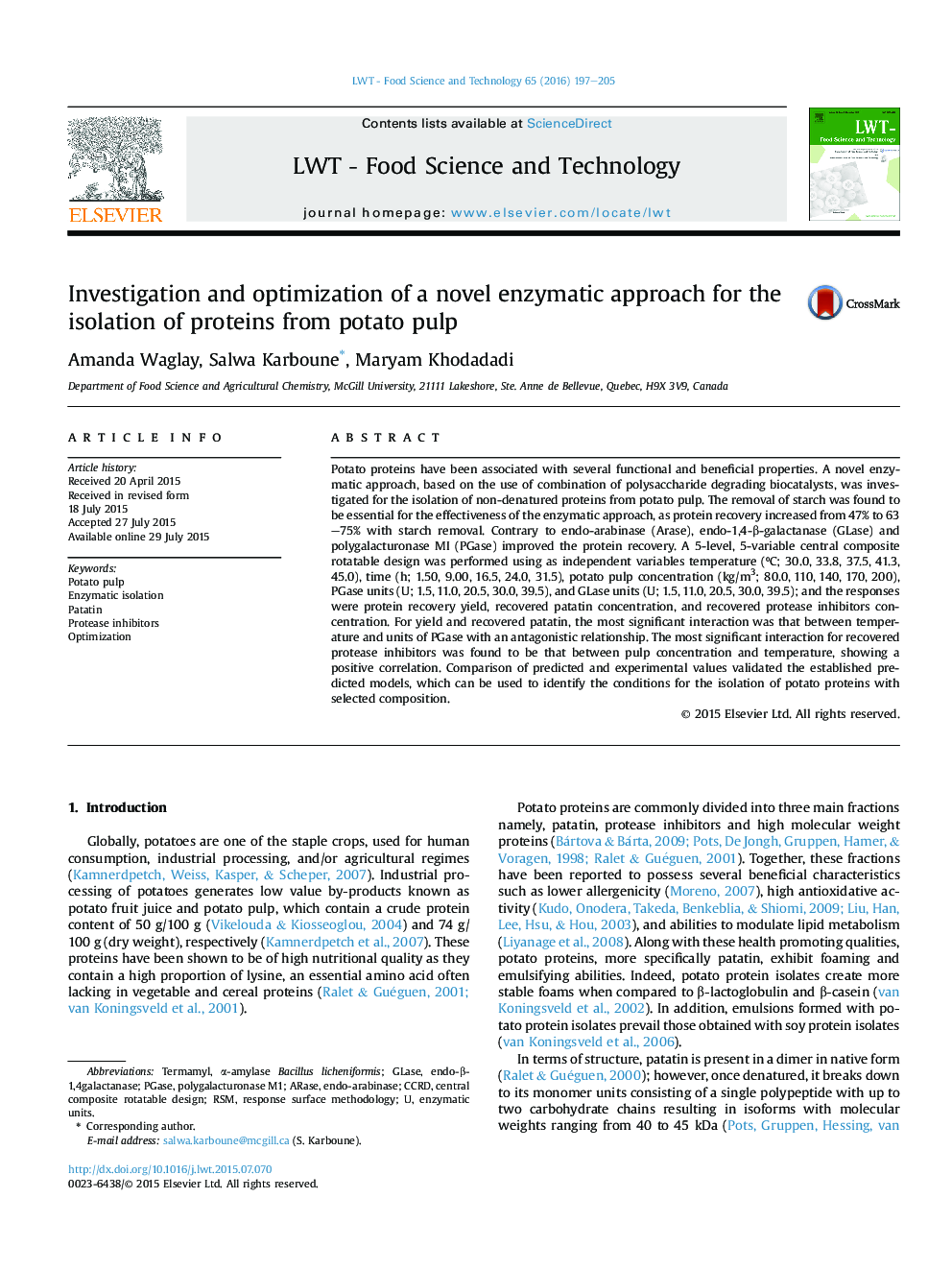| کد مقاله | کد نشریه | سال انتشار | مقاله انگلیسی | نسخه تمام متن |
|---|---|---|---|---|
| 6401507 | 1628532 | 2016 | 9 صفحه PDF | دانلود رایگان |
- An enzymatic approach was developed to isolate non-denatured potato proteins.
- The enzymatic isolation technique led to no protein conformational change.
- Removal of starch was found to be essential for the effectiveness of enzymatic approach.
- Temperature/PGase units interaction is important for maximizing recovered patatin.
- A commitment increase of pulp concentration/temperature maximizes the recovery of protease inhibitors.
Potato proteins have been associated with several functional and beneficial properties. A novel enzymatic approach, based on the use of combination of polysaccharide degrading biocatalysts, was investigated for the isolation of non-denatured proteins from potato pulp. The removal of starch was found to be essential for the effectiveness of the enzymatic approach, as protein recovery increased from 47% to 63-75% with starch removal. Contrary to endo-arabinase (Arase), endo-1,4-β-galactanase (GLase) and polygalacturonase MI (PGase) improved the protein recovery. A 5-level, 5-variable central composite rotatable design was performed using as independent variables temperature (â°C; 30.0, 33.8, 37.5, 41.3, 45.0), time (h; 1.50, 9.00, 16.5, 24.0, 31.5), potato pulp concentration (kg/m3; 80.0, 110, 140, 170, 200), PGase units (U; 1.5, 11.0, 20.5, 30.0, 39.5), and GLase units (U; 1.5, 11.0, 20.5, 30.0, 39.5); and the responses were protein recovery yield, recovered patatin concentration, and recovered protease inhibitors concentration. For yield and recovered patatin, the most significant interaction was that between temperature and units of PGase with an antagonistic relationship. The most significant interaction for recovered protease inhibitors was found to be that between pulp concentration and temperature, showing a positive correlation. Comparison of predicted and experimental values validated the established predicted models, which can be used to identify the conditions for the isolation of potato proteins with selected composition.
Journal: LWT - Food Science and Technology - Volume 65, January 2016, Pages 197-205
